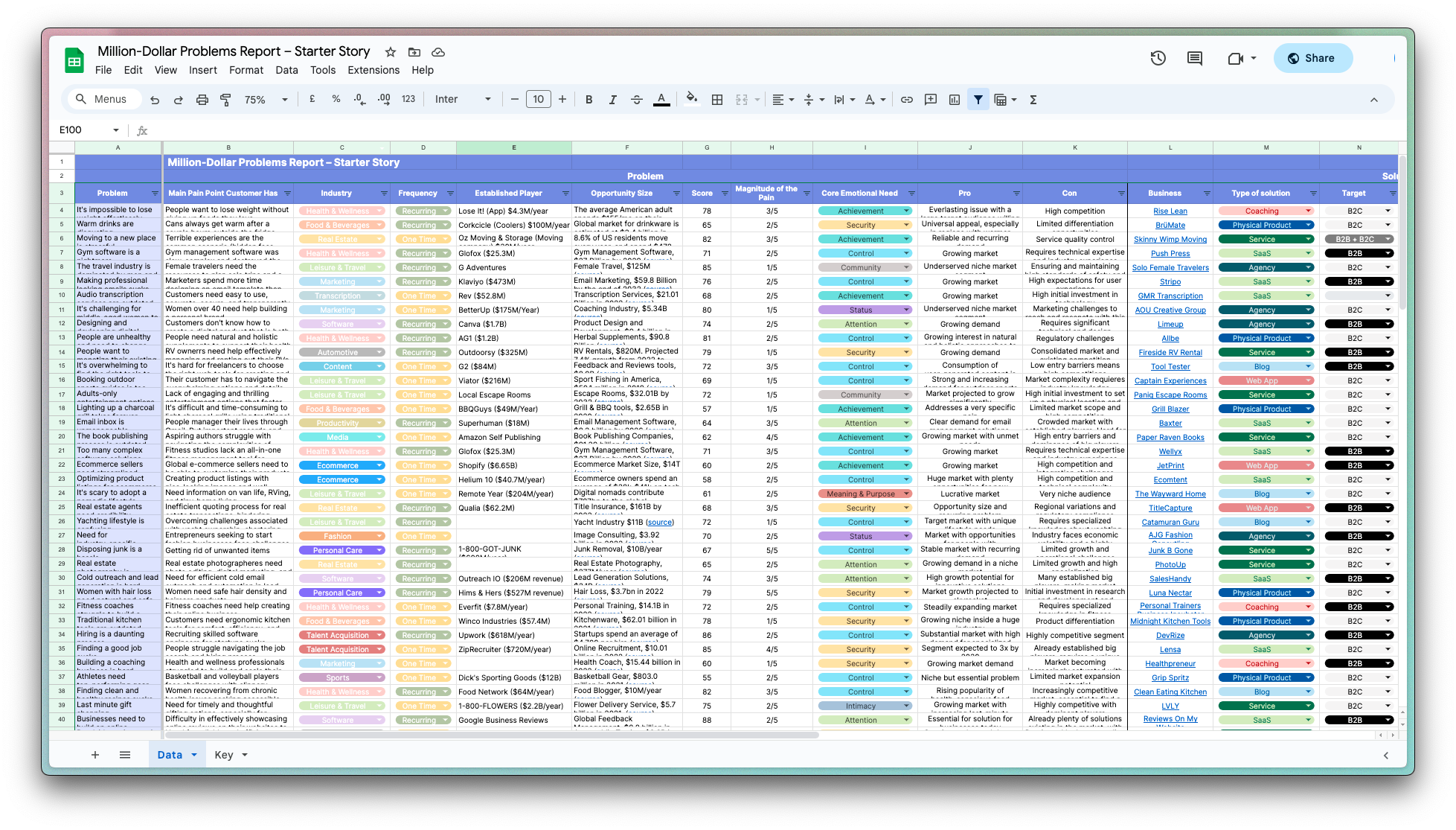|
|
Sustainable fashion blog for conscious wardrobes.
|
|
$17K
monthly
|
1
days
|
$0.09
per visitor
|
$3K
to start
|
90
out of 100
|
|
|
|
|
|
|
|
|
$3.38K
monthly
|
—
days
|
$0.08
per visitor
|
$50
to start
|
95
out of 100
|
|
|
|
|
|
|
Social media growth courses for solopreneurs.
|
|
$317K
monthly
|
90
days
|
$2.35
per visitor
|
$1K
to start
|
90
out of 100
|
|
|
|
|
|
|
|
|
$30K
monthly
|
—
days
|
—
per visitor
|
$15K
to start
|
76
out of 100
|
|
|
|
|
|
|
|
|
$9K
monthly
|
—
days
|
$9.00
per visitor
|
$400
to start
|
90
out of 100
|
|
|
|
|
|
|
|
|
$50K
monthly
|
30
days
|
$5.00
per visitor
|
$2K
to start
|
72
out of 100
|
|
|
|
|
|
|
AI Interview Assistant for job seekers
|
|
$16K
monthly
|
—
days
|
—
per visitor
|
$1K
to start
|
84
out of 100
|
|
|
|
|
|
|
|
|
$7.5K
monthly
|
—
days
|
—
per visitor
|
—
to start
|
50
out of 100
|
|
|
|
|
|
|
Online store for global Pokemon and TCG cards.
|
|
$280K
monthly
|
7
days
|
$14.00
per visitor
|
$499
to start
|
90
out of 100
|
|
|
|
|
|
|
"Holistic health optimization for active adults."
|
|
$130K
monthly
|
90
days
|
$26.00
per visitor
|
$20K
to start
|
58
out of 100
|
|
|
|
|
|
|
|
|
$5K
monthly
|
7
days
|
—
per visitor
|
$50
to start
|
90
out of 100
|
|
|
|
|
|
|
"Subscription-based dev team for startups."
|
|
$42K
monthly
|
30
days
|
$70.00
per visitor
|
$350
to start
|
72
out of 100
|
|
|
|
|
|
|
AI-powered resume builder for job seekers.
|
|
$215K
monthly
|
—
days
|
—
per visitor
|
—
to start
|
62
out of 100
|
|
|
|
|
|
|
|
|
$416K
monthly
|
180
days
|
$5.55
per visitor
|
$15K
to start
|
58
out of 100
|
|
|
|
|
|
|
AI automation solutions tailored for consultants.
|
|
$10K
monthly
|
100
days
|
$1.00
per visitor
|
$50K
to start
|
66
out of 100
|
|
|
|
|
|
|
|
|
$42K
monthly
|
60
days
|
$8.40
per visitor
|
$30K
to start
|
76
out of 100
|
|
|
|
|
|
|
|
|
$10K
monthly
|
7
days
|
$20.00
per visitor
|
$500
to start
|
83
out of 100
|
|
|
|
|
|
|
|
|
$4.5K
monthly
|
178
days
|
$3.75
per visitor
|
$2K
to start
|
90
out of 100
|
|
|
|
|
|
|
Templates for boosting productivity using Notion.
|
|
$20.8K
monthly
|
—
days
|
—
per visitor
|
—
to start
|
80
out of 100
|
|
|
|
|
|
|
Fractional marketing consultancy for B2B startups.
|
|
$75K
monthly
|
30
days
|
—
per visitor
|
$5K
to start
|
81
out of 100
|
|
|
|
|
|
|
|
|
$48K
monthly
|
25
days
|
$252.63
per visitor
|
$1.2K
to start
|
91
out of 100
|
|
|
|
|
|
|
|
|
$13K
monthly
|
25
days
|
—
per visitor
|
$5K
to start
|
90
out of 100
|
|
|
|
|
|
|
|
|
$50K
monthly
|
200
days
|
—
per visitor
|
$25K
to start
|
71
out of 100
|
|
|
|
|
|
|
|
|
$100K
monthly
|
120
days
|
—
per visitor
|
$50K
to start
|
67
out of 100
|
|
|
|
|
























